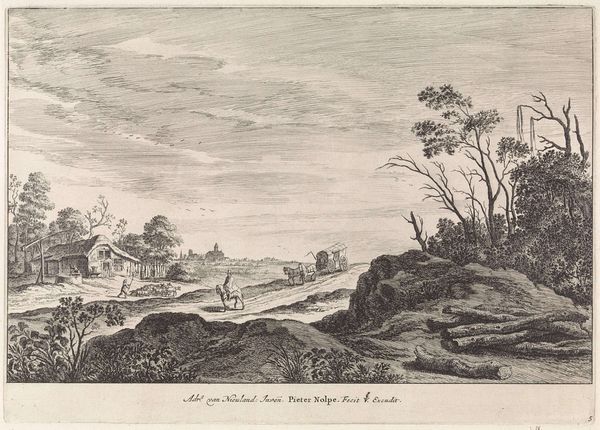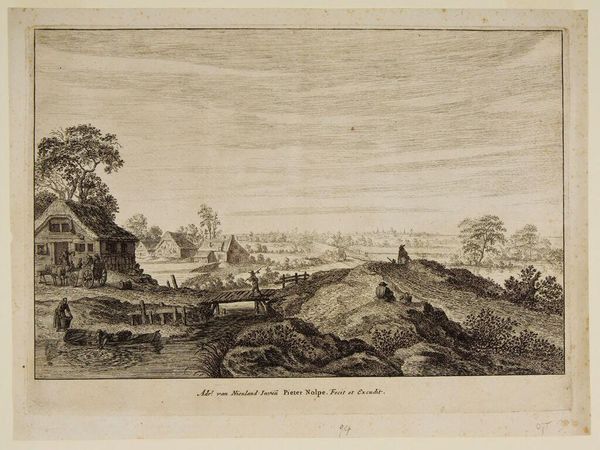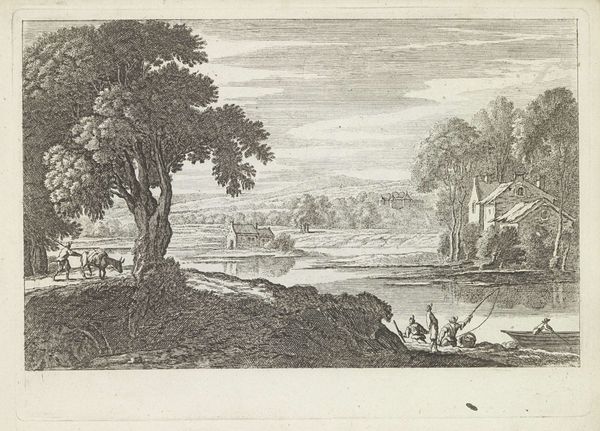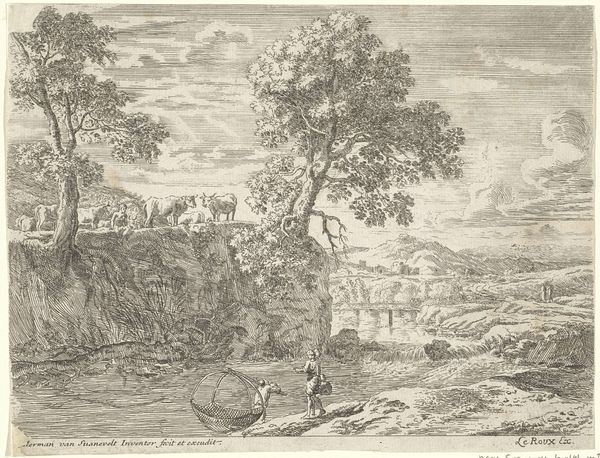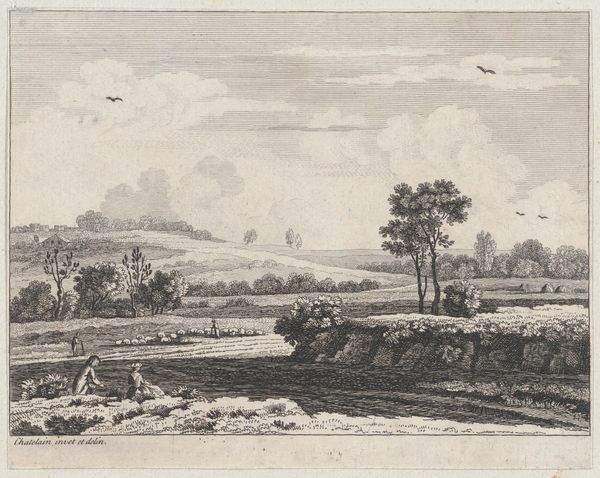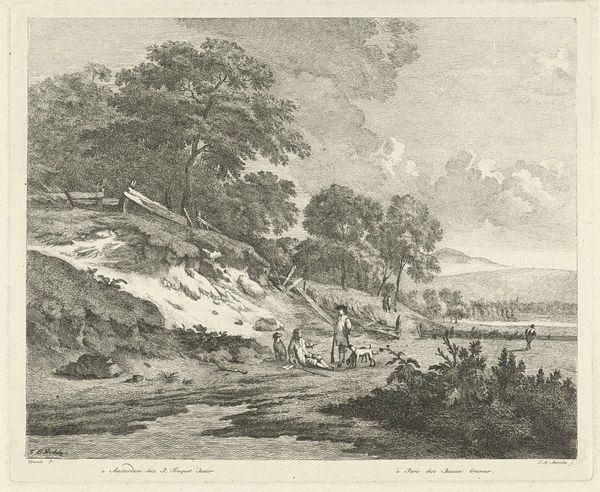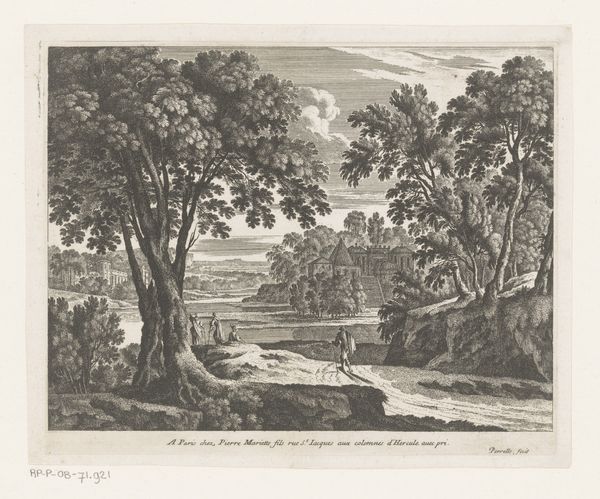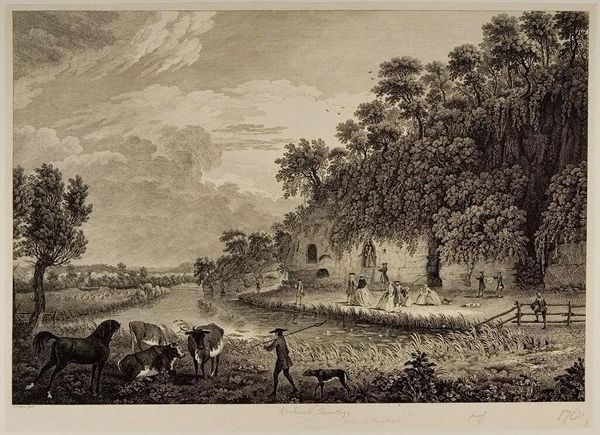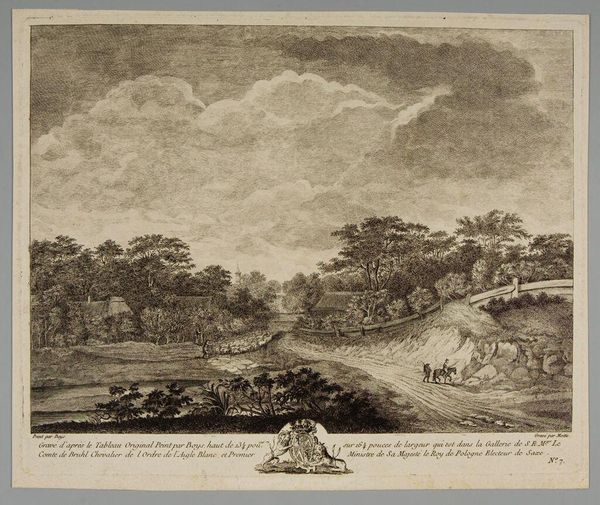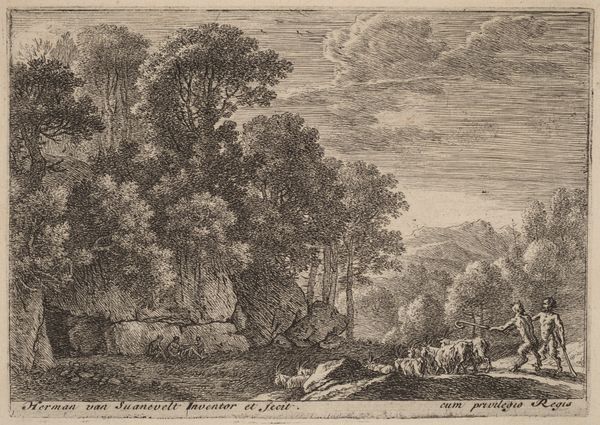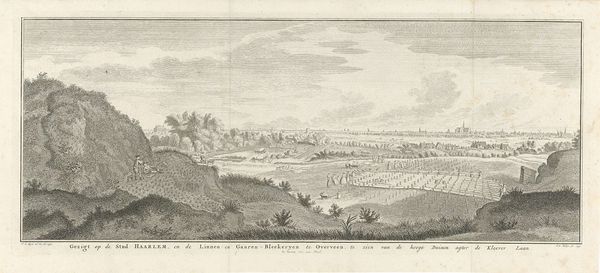
print, etching, engraving
#
baroque
#
dutch-golden-age
# print
#
etching
#
landscape
#
engraving
#
realism
Dimensions: height 232 mm, width 324 mm
Copyright: Rijks Museum: Open Domain
Curator: Before us hangs Pieter Nolpe’s "Landschap met boerderijen", a print using etching and engraving techniques that probably dates between 1623 and 1653. What's your first impression? Editor: It feels quite still, even peaceful, doesn't it? There's a lovely contrast between the detailed foreground and the soft, almost hazy distance. Curator: It reflects the Dutch Golden Age's burgeoning interest in realism and landscape as independent subjects. This piece gives insight into the Netherlands’ evolving sense of nationhood and civic pride during this period. The landscape itself becomes a symbol. Editor: Absolutely. Look at the subtle positioning of figures – their scale against the expansive land. They're small but significant, engaged in the daily life. Do you think Nolpe uses the water to mirror a sense of abundance in that era? Curator: Precisely. Waterways were the lifeblood of the Dutch Republic, vital for trade and defense. You often see them in landscape art of this time, reflecting the national prowess on both the land and sea. Editor: And the lone figure on the hilltop, gazing out – almost romantic in their isolation, what does that evoke to you? A pioneer’s contemplation, perhaps? Curator: Possibly. However, it might symbolize the aspirational middle-class landowner, a potent image for a society defining its identity beyond aristocratic land control. Notice, too, how the farmhouses clustered at the top could stand for new and existing centres of social power. Editor: That is interesting. Also, what is so striking to me about prints, is the way that, even in a simple etching, we receive powerful feelings of place, industry, even societal changes taking place within those serene hillsides. Nolpe captured the symbolism that makes that place eternal, wouldn't you say? Curator: Undoubtedly. Through his strategic design, Nolpe provides a compelling snapshot of Dutch ambition at a vital time in the country’s maturation. Editor: Thinking about Nolpe's placement, his symbols, he offers viewers more than just a scene; it really becomes a mirror of a culture in transformation. Curator: An evocative thought with which to leave our listeners!
Comments
No comments
Be the first to comment and join the conversation on the ultimate creative platform.
